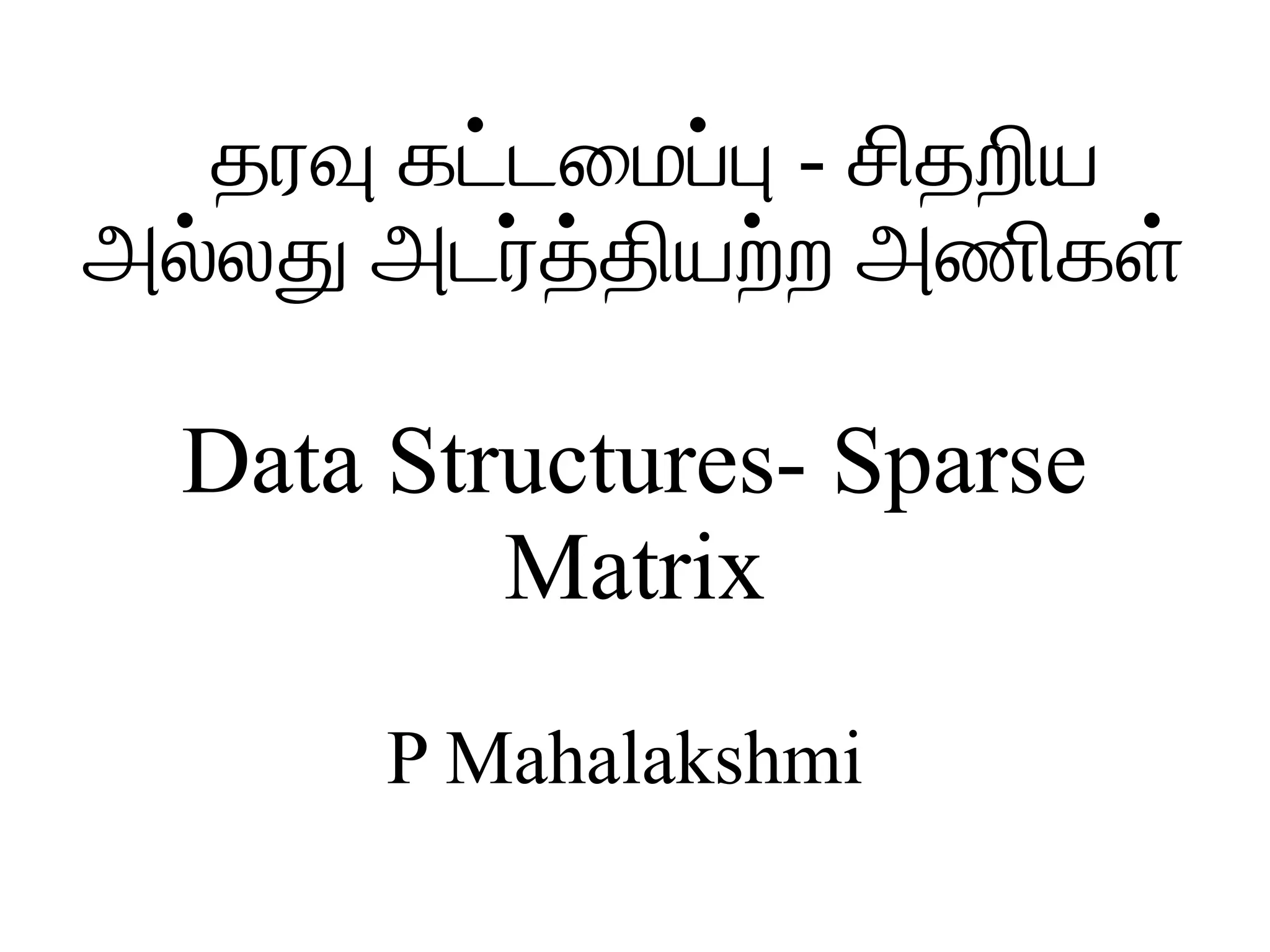Downloaded 44 times









This document discusses sparse matrices. It defines a sparse matrix as a matrix with more zero values than non-zero values. Sparse matrices can save space by only storing the non-zero elements and their indices rather than allocating space for all elements. Two common representations for sparse matrices are the triplet representation, which stores the non-zero values and their row and column indices, and the linked representation, which connects the non-zero elements. Applications of sparse matrices include solving large systems of equations.
Overview of sparse matrices indicating their significance in data structures.
A sparse matrix is defined as a matrix with more zero values than non-zero values, represented by m rows and n columns.
Example of a 100x100 matrix with only 10 non-zero elements, illustrating space inefficiency.
Introduction to different representations of sparse matrices, namely triplet and linked representations.
Explains the triplet representation including storage of non-zero values and their indices in a sparse matrix.
Brief mention of the applications of sparse matrices in computational tasks.
Provides a source for further reading on sparse matrices.








